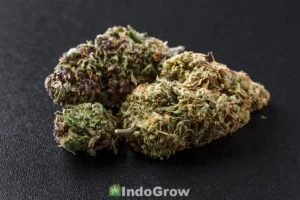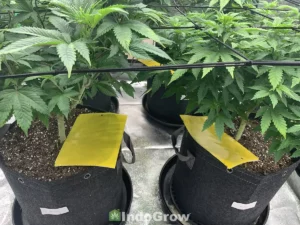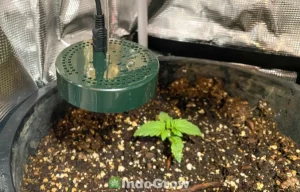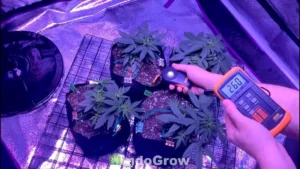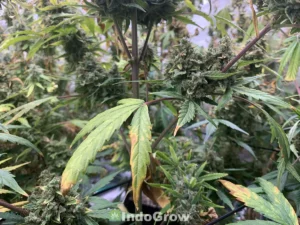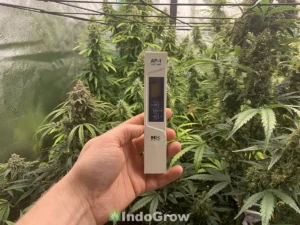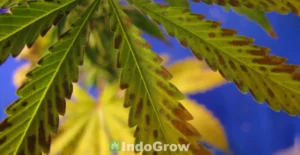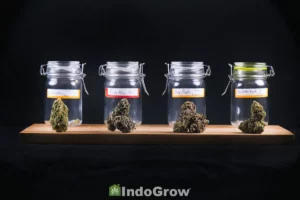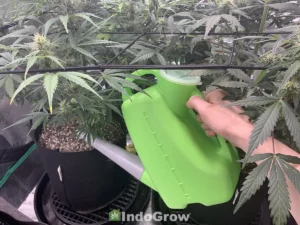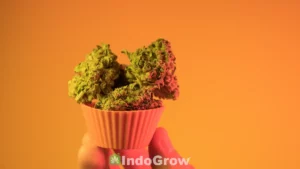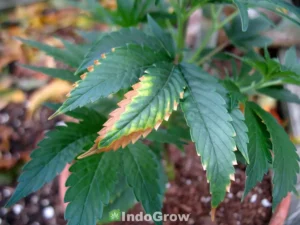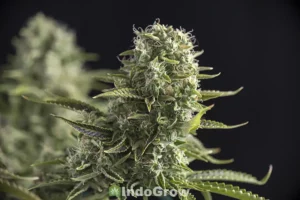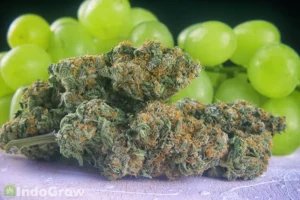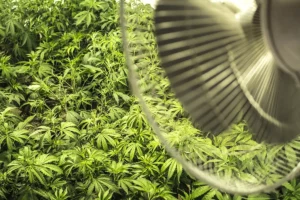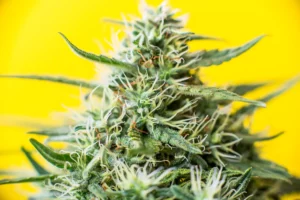Cannabis plants naturally produce over 100 unique cannabinoids, the most popular of which include THC and CBD. These fascinating compounds interact with the endocannabinoid system in your body to cause a wide range of beneficial effects.
This article will explain exactly what are cannabinoids, their effects, and offer tips on how to increase cannabinoids in marijuana plants.
Table of Contents
- What are Cannabinoids?
- Available Cannabinoids in Cannabis
- Cannabinoids Effects
- What is Decarboxylation?
- Cannabinoids vs Terpenes
- What is the Entourage Effect?
- The Medicinal Benefits of Cannabinoids
- What is Cannabinoid Hyperemesis Syndrome?
- How to Increase THC and other Cannabinoids in Cannabis
- How to Protect THC and Other Cannabinoids When Drying, Curing, and Storing Cannabis
- What is Delta 8 THC?
- Conclusion
What are Cannabinoids?
Cannabinoids are chemical compounds that interact with the human endocannabinoid system to produce a wide range of physical and mental effects. Cannabinoids are found naturally in the cannabis plant, and they are also produced within the human body. Cannabinoids can be split into three major groups: Phytocannabinoids, Endocannabinoids, and Synthetic cannabinoids.
Phytocannabinoids
Phytocannabinoids are cannabinoids naturally produced by plants. The field of cannabinoid research is still relatively new. The structure of THC was first discovered in 1964 by Yechiel Gaoni and Raphael Mechoulam, paving the way for additional research on cannabinoids in following years.
The cannabis plant produces over 80 distinct cannabinoids, including THC, THCA, CBD, CBN, and many others. Some of these compounds produce psychoactive effects in humans, while others are believed to regulate the immune system, digestive system, or other processes in the body.
More recently, cannabinoids have been detected in other plants outside of the cannabis family, including black pepper, cinnamon, echinacea, and even certain mushrooms like black truffles. Although these plants will not produce a cannabis-like high, they may have other potentially beneficial effects on the body due to their interaction with the human endocannabinoid system.
Endocannabinoids
Endocannabinoids are cannabinoids produced inside the human body. Also known as the endogenous cannabinoid system (ECS), this large network of receptors, cannabinoids, and enzymes, play a role in a wide range of processes in the brain as well as elsewhere in the body. The two major types of cannabinoid receptors in the human body are known as CB1 and CB2.
CB1 receptors are found in high density in the brain and spinal cord, while CB2 receptors are present in much lower concentrations in the central nervous system. CB2 receptors are plentiful in the GI tract, as well as locations related to immune function such as the spleen, tonsils, and thymus gland.
The human body produces its own endocannabinoids which interact with these receptors. The most common of these is anandamide, which interacts with CB1 receptors. Endocannabinoids are produced constantly by the human body to regulate mood, sleep patterns, memory, appetite, immune function, and more. Phytocannabinoids and synthetic cannabinoids produce effects on people by interacting with these same receptors.
Synthetic Cannabinoids
Synthetic cannabinoids are chemical compounds produced in labs which interact with the human endocannabinoid system. Common street names for these compounds include K2, spice, and synthetic marijuana. These products are often sprayed onto smokable plants or dissolved in fluid before being sold to consumers.
The effects of these compounds on the human body are often poorly understood, and many synthetic cannabinoids appear to be far more potent than those found in nature or produced by the human body. Although they can produce strong feelings of euphoria, synthetic cannabinoids may also cause a huge range of serious side effects including heart palpitations, altered mental states, nausea, seizures and even death.
Because these products are unregulated and often illegal, some synthetic cannabinoids on the market may be cut with toxic compounds like brodifacoum, a potent rat poison. In 2018, synthetic marijuana blends containing brodifacoum lead to at least 300 injuries and 8 deaths, prompting the FDA and CDC to issue warnings against consuming these products.
Available Cannabinoids in Cannabis
Cannabis naturally produces dozens of cannabinoids, the most well known of which are THC and CBD. This section will outline a few major phytocannabinoids and their effects.
THC
THC, also known as tetrahydrocannabinol, is the best known cannabinoid in marijuana. THC interacts with the CB1 receptors in the brain to produce psychoactive and medicinal effects. THC is the most plentiful cannabinoid in cannabis, as well as the most popular for recreational consumers.
Because THC can produce strong psychotropic effects, the compound is listed as a schedule one controlled substance by the US federal government, who allege that the compound has no therapeutic uses. However, many states have disagreed with this policy in recent years, allowing for THC to be used in therapeutic and recreational contexts.
CBD
CBD, also known as cannabidiol, is another relatively plentiful cannabinoid in the cannabis plant. Unlike CBD, this cannabinoid is non-psychotropic, and it is consumed primarily for its medicinal effects. Because CBD does not produce a high, it is often legal in places where other cannabinoids have been prohibited.
Unlike THC, CBD molecules do not have a high affinity for binding to CB1 or CB2 receptors in the body. Although CBD has been observed to have many therapeutic effects for both physical and psychological conditions, the exact pathways in the body CBD uses to produce these effects remain largely unknown.
Other Cannabinoids
CBG, or Cannabigerol, is a cannabinoid found in low concentrations in mature cannabis plants, but much higher concentrations in immature plants. CBG is converted into other cannabinoids as the plant ages, earning it nicknames like “the mother cannabinoid”. Although it is non psychoactive, CBG has shown promising anti-cancer and anti inflammatory properties.
CBN, or cannabinol, is an unusual cannabinoid that does not develop directly from CBG. Instead, it forms as THC breaks down. Because CBN is non psychoactive, it is generally considered an undesirable side effect of weed aging or going stale. However, CBN may still have some sedative, analgesic (painkilling) and antibiotic effects.
Cannabinoids Effects
This section will give an overview of the effects of the two most popular cannabinoids: THC and CBD.
THC Effects
THC is famous for its potent psychoactive effects, which can include euphoria, mental and physical relaxation, time dilation, paranoia, food cravings, sedation, and more. THC is a popular choice to treat insomnia, lack of appetite, nausea, anxiety, and chronic pain, and more in medical users.
CBD Effects
Although CBD is not psychoactive like THC, it can produce feelings of bodily relaxation due to its anti-inflammatory and pain relieving properties. Research suggests that CBD can also help treat or slow the progression of some neurological disorders including epilepsy, parkinsons, and multiple sclerosis.
Due to the presence of CB2 cannabinoid receptors in the skin and digestive tract, some users will rub CBD infused oils onto their skin or ingest CBD extracts for more targeted effects.
What is Decarboxylation?
THCA, or tetrahydrocannabinolic acid, is the form of THC prevalent in raw cannabis. On a molecular level, THCA has an extra carboxyl ring compared to THC, which prevents this cannabinoid from binding to CB1 receptors in the brain. The process of heating THCA until it loses this carboxyl ring and transforms into THC is called decarboxylation.
How to Decarb Cannabis?
Decarboxylation occurs anytime THCA is exposed to sufficient heat. Smoking and vaping cannabis products is a common way to decarb THCA into psychoactive THC.
Marijuana can also be decarbed at home for use in edibles, creams, or tinctures. Buds should be exposed to temperatures of around 200-250 degrees F for 30 to 40 minutes for best effects, usually in an oven for even heat distribution. Overcooking as well as exposure to temperatures over 300 F will destroy the cannabinoids instead of decarbing them, so watch your buds carefully during this process.
The decarbing process will also produce a strong cannabis odor, so it is best to prepare your work area by turning on an exhaust fan or opening nearby windows.
Cannabinoids vs Terpenes
Terpenes are small, aromatic molecules found in thousands of plants including cannabis, while cannabinoids are larger compounds found primarily in cannabis plants. Terpenes are produced by trichomes as the flowers ripen, and they contribute to the characteristic scent and flavor of cannabis. They also have a wide range of potential medical benefits including analgesic, anti microbial, anti fungal, anti tumor, and more.
While terpenes do not interact directly with the endocannabinoid system, they may influence the behavior of cannabinoids in the body through the entourage effect. Both cannabinoids and terpenes are part of a broader group of chemical compounds called terpenoids, and they share some structural similarities.
One terpene, beta-caryophyllene, acts as both a terpene and a phytocannabinoid. Beta-caryophyllene is capable of interacting with CB2 receptors in the body to produce effects such as pain relief.
What is the Entourage Effect?
The entourage effect is a theory that different compounds in the cannabis plant work together to create greater therapeutic effects than if any one compound is taken individually. Although science is just beginning to understand some of the complex relationships between terpenes, cannabinoids, and the human body, some research already suggests that combining terpenes with cannabinoids such as CBD can increase their therapeutic effects.
Due to changes in federal law allowing for the sale of products containing up to 0.3% THC, many companies selling CBD extracts are now offering full spectrum products containing CBD, THC, and a variety of other compounds pressed from the hemp plant. In comparison, broad spectrum extracts contain everything but THC. Both broad and full spectrum CBD products can be a great way to experience the entourage effect when medicating with cannabis.
The Medicinal Benefits of Cannabinoids
Cannabinoids have a wide range of medicinal benefits, ranging from pain relief to improved mood. Here are a few of the major potential benefits of cannabinoids.
Pain Relief: Cannabinoids show great promise as analgesics. They are far less addictive than opioids, and appear to reliably relieve pain from headaches, stomach upset, and more. However, regular cannabis consumption can also increase sensitivity to pain and decrease the effectiveness of anesthetics, so be sure to discuss your cannabis use with your doctor if you wish to use it as part of your medical treatment.
Antiviral: Cannabinoids can reduce inflammation in the body, reducing symptoms of viral illness. In addition, some research suggests that cannabinoids can reduce the ability of viruses to replicate in the body.
Anticancer: Some early research has suggested that cannabinoids may assist in shrinking tumors or slowing the spread of certain cancers in the body. However, current use of cannabis in cancer treatment is aimed at reducing pain and discomfort associated with cancer and cancer treatments.
Antidepressant: Cannabis use is associated with lower rates of self reported depressive symptoms. It can also alleviate insomnia and lack of appetite, two symptoms commonly seen along with depression.
Antimicrobial: Cannabinoids, CBD in particular, have shown some promise in slowing the growth and reproduction of some gram-positive bacteria. That being said, cannabinoids are not a replacement for antibiotics if you have a bacterial infection.
What is Cannabinoid Hyperemesis Syndrome?
Cannabinoid hyperemesis syndrome (CHS) is a condition that can develop from prolonged high consumption of cannabinoids. This condition causes intense nausea and vomiting after cannabis consumption. Symptoms are almost identical to Cyclical vomiting syndrome, with the only diagnostic difference being regular consumption of cannabis.
CHS was first described in 2004, and is believed to be caused by excessive buildup of cannabinoids negatively affecting the function of the gastrointestinal tract and central nervous system.
The most common and severe trigger for CHS sufferers is smoking or otherwise consuming cannabinoids. However, chronic cannabis overuse can lead to large amounts of cannabinoids building up in fatty tissues in the body, which are then released when fat is burned, triggering CHS symptoms.
Cannabinoid Hyperemesis syndrome is rare, and usually affects people who smoke 3-5 times a day for years. Those who began smoking in adolescence are at heightened risk of developing CHS, as are those who habitually consume very high THC strains or concentrates. Exact rates of CHS in cannabis smokers are unknown, as the condition is poorly understood and some sufferers may be reluctant to admit their cannabis use to doctors.
How Long Does Cannabinoid Hyperemesis Syndrome Last?
CHS presents in three stages: Prodrome, hyperemetic, and recovery. The prodrome stage can last for months or years, and includes symptoms like nausea, abdominal discomfort, and a persistent fear of vomiting. Patients may continue or increase cannabis use under the assumption that it will decrease feelings of nausea.
The hyperemetic stage includes intense and persistent vomiting, with patients often vomiting or retching 5 times an hour or more. This stage can also include mild abdominal pain, lack of appetite, dehydration, and weight loss. Symptoms are often incapacitating and can eventually lead to hospitalization.
The recovery phase occurs after patients stop consuming cannabis. Nausea and vomiting slowly subside, and patients begin to return to normal eating habits.
How to Get Rid of Cannabinoid Hyperemesis?
People suffering from CHS often take multiple hot showers or baths per day, as hot water can temporarily calm symptoms. Drinking electrolytic beverages or receiving saline at the hospital can also decrease symptoms of dehydration.
However, the only cure for Cannabinoid Hyperemesis syndrome is to stop consuming cannabinoids entirely. After cessation of cannabis use, symptoms will slowly improve as the body works through its stored supply of cannabinoids. Using even small amounts of cannabis months or years later can cause symptoms to return, so CHS sufferers are strongly cautioned to permanently avoid cannabinoids.
The best way to avoid CHS is to use cannabinoids responsibly. Do not offer cannabis products to adolescents, and try to take occasional tolerance breaks to give your body time to work through the cannabinoids built up in your fat cells. If you notice nausea after consuming cannabinoids, take this as a sign to decrease your consumption before hyperemesis sets in.
How to Increase THC and other Cannabinoids in Cannabis
The easiest way to increase THC levels in your plants is to start with a high THC strain. Once you select your strain, be sure to optimize your lighting throughout the grow. Minimum lighting of 500 PPFD during vegetative stage and 900 PPFD during flower will give your plants the energy needed to produce potent buds. Adding UV lighting to your plants will not directly increase cannabinoid production, but it can increase terpene levels, which in turn increase the perceived potency of a strain via the entourage effect.
Lowering temperatures during the last week of flowering can also increase cannabinoid production, as can turning off the lights 48 hours before harvest. Because cannabis is an annual crop, decreasing heat and light signals to the plant that its growing season is almost over. The plant will enter a final burst of productivity before “winter” sets in. Feeding your plant with cannabinoid enhancing nutrients such as Terpinator may also help, although regular feeding with life stage-appropriate nutrients will yield similar results.
How to Protect THC and Other Cannabinoids When Drying, Curing, and Storing Cannabis
Cannabis should be dried in a cool dark room with temperatures between 60-70 F and humidity between 55-60%. Drying will take around 4-10 days, and is finished when small stems snap easily but buds are not dusty or brittle. Do not try to rush the drying process, as this will lead to a lower potency final product.
For curing, place buds in a wide mouth mason jar with a Boveda 62% humidity pack and place in a cool dark location. Burp the jars daily for the first week, then gradually increase time between burpings.
For longer term storage, continue to keep the weed in a cool dark place with a humidity pack. Opening the jar periodically to take out buds should offer sufficient airflow.
What is Delta 8 THC?
Delta 8 THC is an isomer of Delta 9 THC, the variety found naturally in cannabis. Delta 8 is present in very small quantities in hemp and marijuana, but it is also produced synthetically for commercial sale. Delta 8 is less potent than delta 9, but its gray legality has made it a popular alternative to conventional marijuana in states where delta 9 is prohibited.
The DEA recently announced that all synthetic forms of THC are illegal. However, cannabinoids derived from hemp are still legal in low concentrations. The legality of delta 8 products also varies state by state, so researching your state’s laws before buying delta 8 products is advisable.
Where Can I Buy Delta 8 THC Near Me?
Hemp derived delta 8 can be found for sale at smoke shops and convenience stores in many states. Delta 8 products are often available as edibles, disposable vapes, or sprayed onto hemp flowers. Be sure to research delta 8 brands before making a purchase, as some companies have much higher standards for testing and purity than others.
Conclusion
Cannabinoids are a group of molecules found in abundance in the cannabis plant, as well as in the human body. They interact with the human endocannabinoid system to produce a wide range of medicinal and recreational effects. Although overconsumption of cannabinoids can lead to some health risks, cannabinoids are generally considered a safe and natural product for purposes like pain relief, reducing inflammation, relaxation, and much more

Rocky Horton
Author
Rocky Horton is an experienced cannabis grower and the founder of IndoGrow. The IndoGrow editorial team has over four decades of combined growing experience. Learn more.


